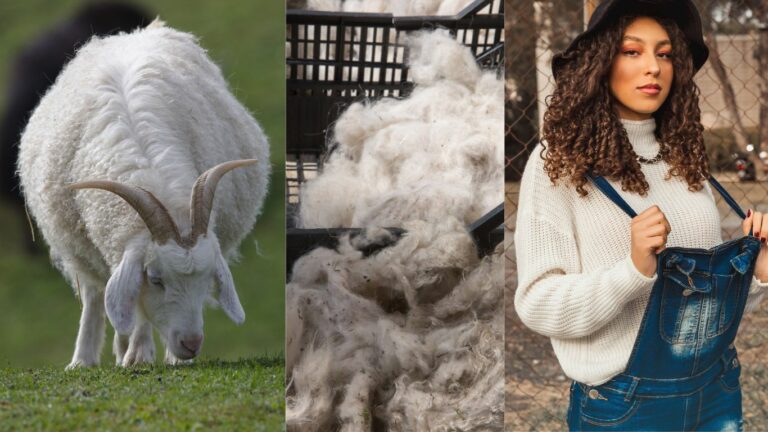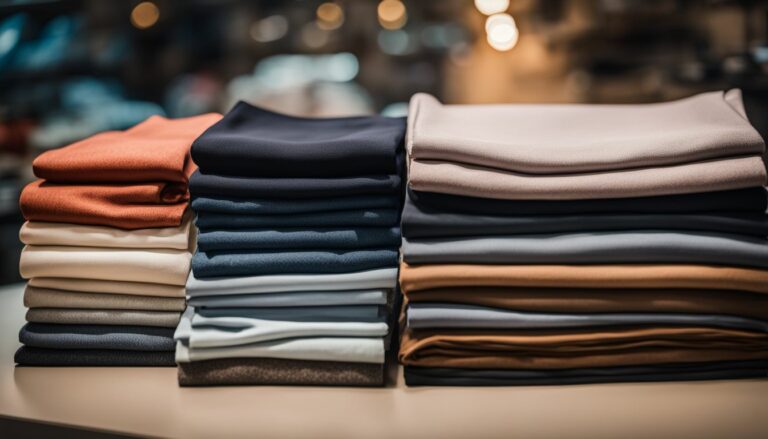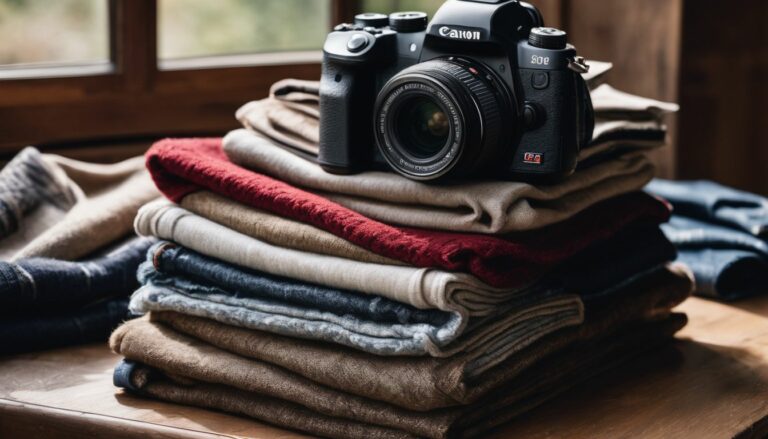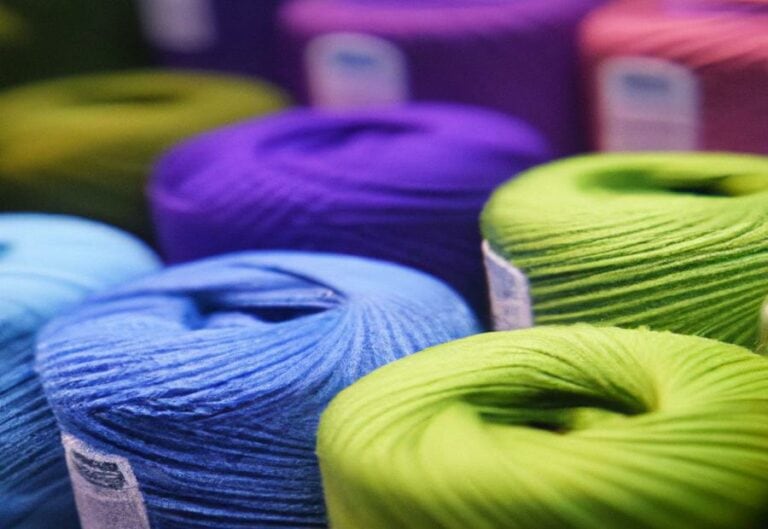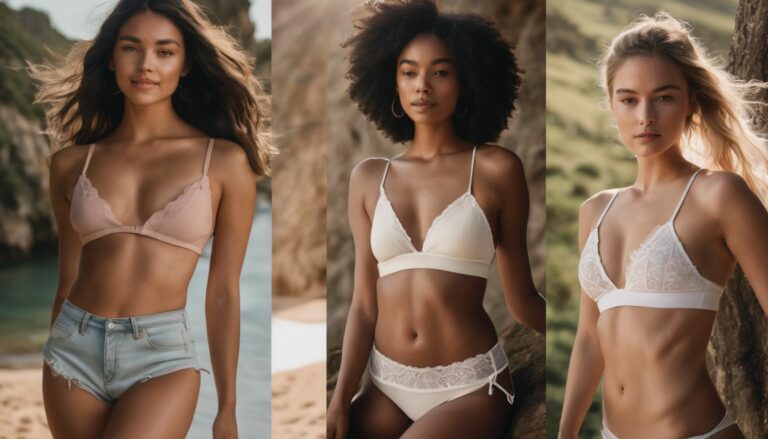31 Sustainable Fabrics For The Most Eco-Friendly Fashion
Navigating the world of sustainable fashion can be a daunting task. Did you know that the textile industry contributes around 10% of global greenhouse gas emissions? Our article will guide you through the top 31 eco-friendly fabrics, from organic cotton to innovative materials like Piñatex and SCOBY leather.
Ready to transform your wardrobe into an environmentally-friendly haven? Let’s dive in!
Key Takeaways
- The textile industry contributes around 10% of global greenhouse gas emissions.
- Organic cotton, organic linen, and organic hemp are sustainable alternatives to regular cotton and are better for the environment.
- Fabrics like Tencel, Modal, and Cupro offer eco – friendly options that are made from renewable sources and require less water during production.
- Animal – derived materials such as alpaca wool, yak wool, camel wool, peace silk, responsible wool, responsible cashmere, responsible leather, and responsible down can be more sustainable choices for fashion.
Natural, Plant-Based Fabrics
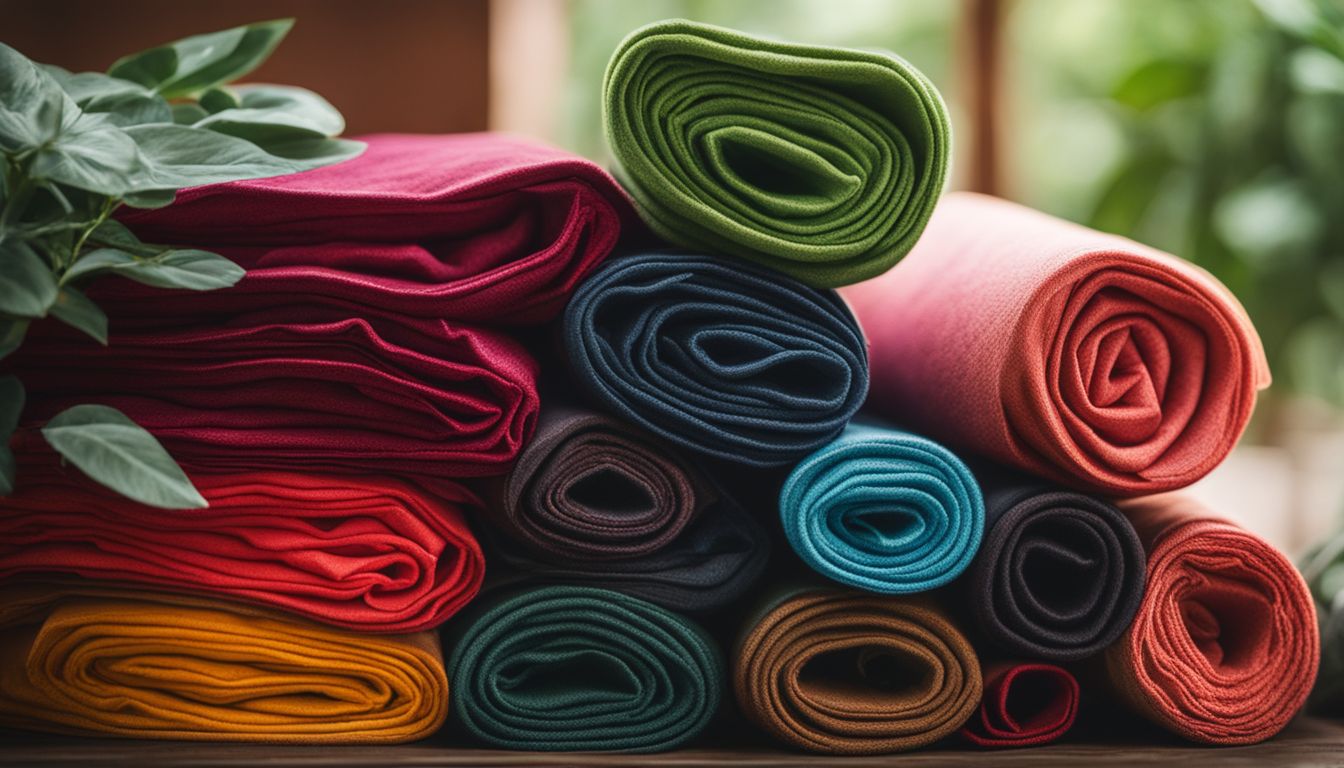
Natural, plant-based fabrics offer a sustainable and eco-friendly alternative for fashion production.
Organic Cotton
Organic cotton is good for our planet. It gets made without using harmful chemicals. This helps keep the soil, air, and water cleaner. Also, it often uses less water than regular cotton.
Organic cotton farms are safer for workers too because they don’t touch toxic pesticides. Clothes from organic cotton can be softer and nicer to wear as well!
Organic Linen
Organic linen is a sustainable fabric that comes from the flax plant. It is made without the use of synthetic chemicals, pesticides, or genetically modified organisms (GMOs). Organic linen production focuses on maintaining soil health and water conservation.
The fibers of organic linen are strong, breathable, and naturally antibacterial. This makes it a great choice for clothing and home textiles. Organic linen also has low environmental impact as it requires less water and energy compared to conventional linen production methods.
It is biodegradable and compostable at the end of its life cycle, making it a truly eco-friendly choice for fashion lovers who care about sustainability.
Organic Hemp
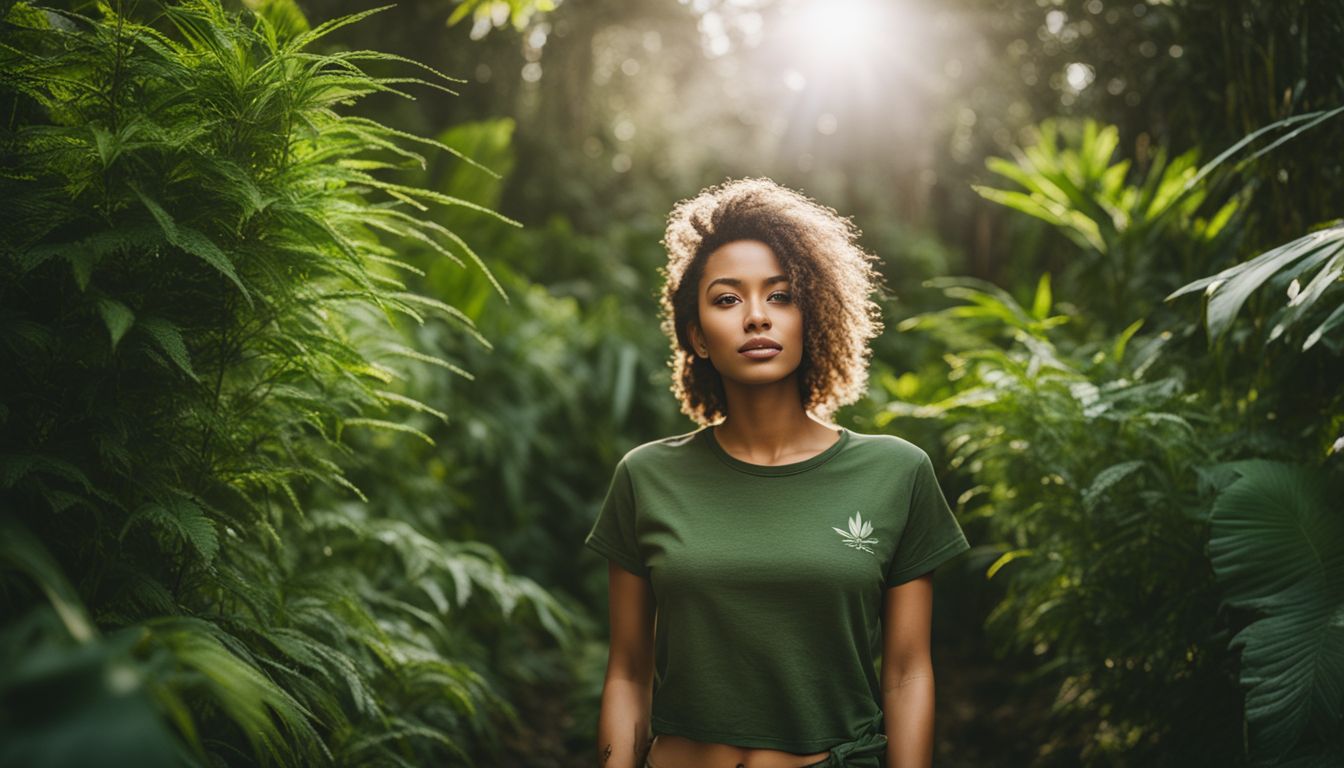
This fabric has many uses, from clothing and accessories to home furnishings. Organic hemp is also known for its breathability and moisture-wicking properties, making it comfortable to wear in warm weather.
Additionally, hemp plants require less water compared to other crops like cotton, making them a more sustainable option for fashion production.
Ramie (Stinging Nettle)
-6a62980082-205607235.jpg)
Ramie, also known as Stinging Nettle, is a natural and sustainable fabric that is gaining popularity in eco-friendly fashion. It comes from the stem of the ramie plant and has been used for centuries due to its strong and durable properties.
Ramie fabric is lightweight, breathable, and has excellent moisture-wicking abilities, making it ideal for warm weather clothing. Additionally, it has natural antibacterial properties and is resistant to mold and mildew.
Ramie cultivation requires fewer pesticides and water compared to other fabrics like cotton. This makes it an environmentally friendly choice for conscious consumers who want to support sustainable fashion.
Natural Rubber

Natural rubber is a sustainable fabric that comes from the sap of rubber trees. It is biodegradable and renewable, making it an eco-friendly choice for fashion. The production of natural rubber involves tapping the trees to collect the sap, which does not harm or kill the tree.
This material is used in various products, including footwear, accessories, and even clothing like raincoats. Natural rubber is known for its elasticity and durability, making it a popular choice in industries beyond fashion as well.
By choosing products made with natural rubber, you can support sustainable practices and reduce your environmental impact.
Semi-Synthetic or Man-Made Fabrics

These fabrics are made from materials that are partially derived from natural sources but undergo a chemical process to create the final material.
Lyocell (Tencel, Excel, Monocel)
Lyocell, also known as Tencel, Excel, or Monocel, is a sustainable fabric that is gaining popularity in the fashion industry. It is a semi-synthetic material made from wood pulp using an environmentally friendly process.
Lyocell has many advantages – it is biodegradable, requires less water and energy to produce than cotton, and is breathable and soft on the skin. Additionally, it has a smooth texture and drapes well when used in clothing.
This eco-friendly fabric can be found in various textiles like shirts, dresses, and bedding. It offers a great alternative to conventional fabrics while still being stylish and comfortable.
Modal
Modal is a semi-synthetic or man-made fabric that is known for its softness and durability. It is made from beech tree pulp, which makes it a natural and sustainable choice for eco-friendly fashion.
Modal has excellent moisture-wicking properties, which means it can absorb and release moisture quickly, keeping you cool and dry. It is also resistant to shrinking and fading, making it ideal for long-lasting clothing items.
When compared to conventional cotton, modal requires less water and energy during production, making it a more environmentally friendly option. Some popular brands use modal in their collections as they are committed to promoting sustainable fashion practices.
Sustainable Viscose
Sustainable viscose is a type of fabric that is made from renewable sources, such as wood pulp or bamboo. It is produced using a closed-loop process that minimizes waste and chemical usage.
Sustainable viscose has a lower environmental impact compared to conventional viscose, which can contribute to deforestation and pollution. By choosing sustainable viscose, you can support the production of fabrics that are more environmentally friendly and help reduce the negative impacts of the fashion industry on our planet.
Cupro
Cupro is a semi-synthetic fabric that is made from the cellulose fibers of cotton waste. It is considered to be a more sustainable alternative to conventional viscose because it uses less water and energy in its production.
Cupro has a silky, smooth texture and drapes well, making it ideal for clothing like dresses and blouses. It is also breathable, hypoallergenic, and biodegradable. Some sustainable fashion brands use cupro as an eco-friendly option for their garments.
Overall, cupro offers a combination of style, comfort, and sustainability in the world of eco-friendly fashion.
Sustainable Bamboo
Bamboo is a sustainable fabric that is gaining popularity in eco-friendly fashion. It is a fast-growing plant that requires no pesticides or fertilizers to grow, making it an environmentally friendly choice.
Bamboo fabric has natural antibacterial properties, which means it doesn’t require harsh chemicals for cleaning. It is also biodegradable and can be easily recycled or composted at the end of its life cycle.
Moreover, bamboo fabric has excellent moisture-wicking abilities, making it ideal for activewear and underwear. Overall, sustainable bamboo is a versatile and eco-conscious option for those looking to make more sustainable fashion choices.
Animal-Derived Materials
– Alpaca Wool: Known for its softness and warmth, alpaca wool is a sustainable alternative to traditional sheep’s wool.
– Yak Wool: Sourced from yaks in the Himalayas, yak wool is durable and hypoallergenic, making it an eco-friendly choice for clothing.
– Camel Wool: Renowned for its insulation properties, camel wool is breathable and lightweight, making it ideal for creating sustainable fashion pieces.
– Peace Silk: Also known as Ahimsa silk, peace silk is produced without harming silkworms, making it a cruelty-free option for luxurious fabrics.
– Responsible Wool: Obtained through ethical farming practices that prioritize animal welfare and environmental sustainability.
– Responsible Cashmere: Produced with careful consideration of the well-being of cashmere goats and the land they graze on.
– Responsible Leather: Derived from animals raised in humane conditions with minimal impact on the environment.
– Responsible Down: Collected using responsible methods that ensure no harm
Alpaca Wool

Alpaca wool is a sustainable fabric that comes from the fur of alpacas, which are native to South America. Alpaca wool is known for its softness, warmth, and durability. It is also hypoallergenic, making it a great choice for those with sensitive skin.
In addition to being sustainable, alpaca wool is also biodegradable, meaning it can break down naturally over time without harming the environment. This makes it a more eco-friendly option compared to synthetic fabrics like polyester or acrylic.
Alpaca wool can be used in various types of clothing and accessories, including sweaters, scarves, and hats. It is often blended with other fibers like organic cotton or recycled materials to create even more sustainable options.
Yak Wool
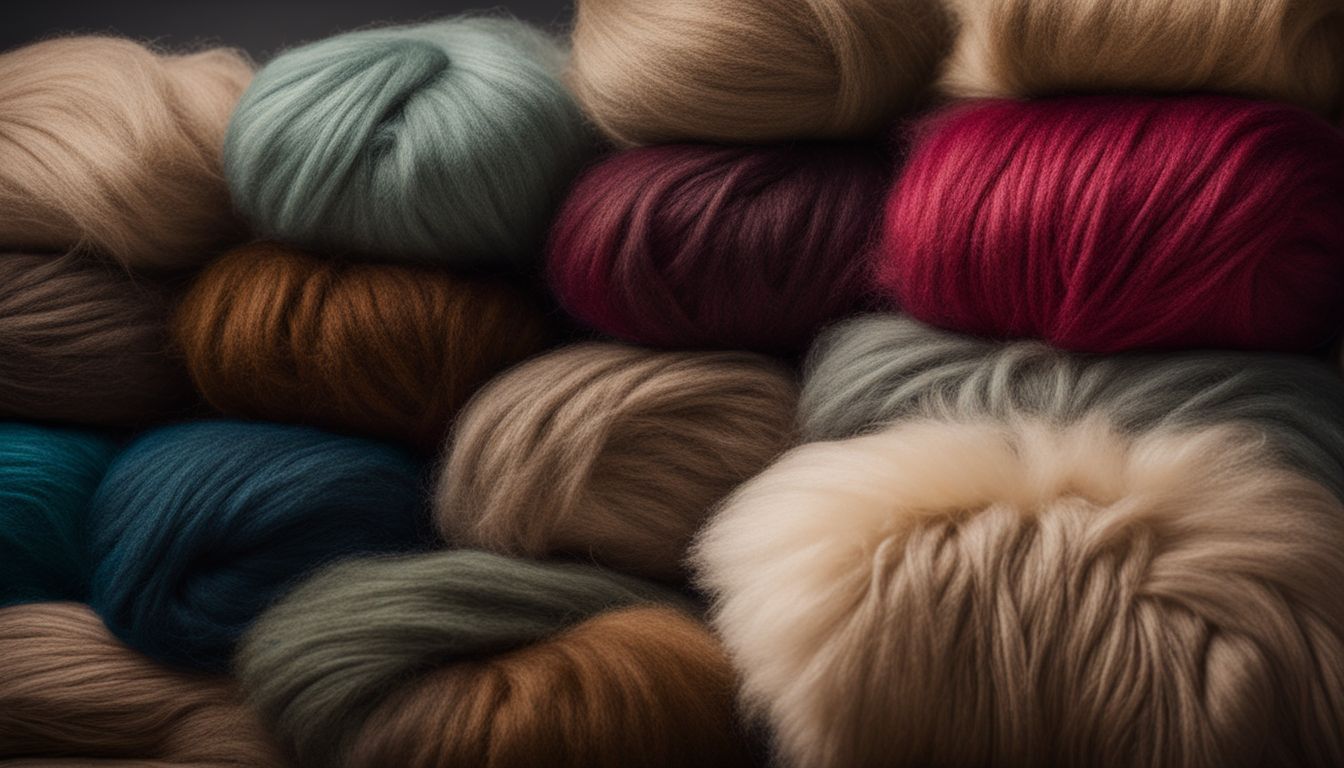
Yak wool is a sustainable fabric that comes from the underbelly of yaks, which are native to the Himalayan region. It is soft, warm, and highly durable, making it an excellent option for eco-friendly fashion.
Yak wool is known for its thermal properties, providing insulation in cold weather while remaining breathable. It also has natural antimicrobial and moisture-wicking abilities, keeping you dry and odor-free.
Additionally, yak wool is environmentally friendly because yaks have a low impact on their surroundings due to their gentle grazing habits. This fabric offers a sustainable alternative to traditional animal-derived materials and synthetic fibers.
Camel Wool

Camel wool is an eco-friendly fabric that is known for its sustainability. It comes from the hair of camels, which are native to dry and arid regions. The camels naturally shed their hair, so no harm is done to them during the collection process.
Camel wool is biodegradable and has excellent insulation properties, making it a great choice for warm clothing in colder climates. It is also hypoallergenic and resistant to odors and stains.
Additionally, camel wool requires less water and energy during production compared to other types of animal-derived fabrics. So, if you’re looking for a sustainable option that keeps you cozy, camel wool might be worth considering for your wardrobe!
Peace Silk

Peace silk, also known as Ahimsa silk, is a type of fabric that is produced without causing harm to the silkworms. Unlike traditional silk production, where silkworms are boiled alive to obtain the precious threads, peace silk allows them to complete their life cycle.
The cocoons are carefully collected after the silkworm has emerged as a moth and then spun into yarn. This process prioritizes animal welfare and ethical practices. Peace silk offers a more compassionate alternative for those who want to wear silk but have concerns about animal cruelty.
Responsible Wool

Responsible wool is a sustainable and eco-friendly fabric that is obtained from sheep in an ethical and humane manner. It involves practices such as ensuring the welfare of the animals, providing them with appropriate living conditions, and using responsible shearing techniques.
Responsible wool also focuses on minimizing the environmental impact by promoting regenerative grazing methods and reducing water usage during production. By choosing products made from responsible wool, you can support sustainable farming practices while enjoying high-quality and durable clothing or home goods.
Responsible Cashmere

Responsible cashmere is an important fabric in sustainable fashion. Cashmere comes from goats, and responsible sourcing ensures that the animals are treated well and their grazing areas are not overgrazed.
This helps to maintain a healthy balance between the goats, the environment, and the communities that depend on cashmere production. Responsible cashmere also includes ethical practices in processing and manufacturing, such as reducing water usage and minimizing chemical waste.
By supporting brands that prioritize responsible cashmere, consumers can contribute to a more environmentally friendly and socially conscious fashion industry.
Responsible Leather
One important aspect of sustainable fashion is responsible leather. Responsible leather refers to the ethical sourcing and processing of leather materials. It involves ensuring that the animals used for their skin are treated humanely and that the production processes minimize harm to the environment.
By choosing responsible leather, consumers can support brands that prioritize animal welfare and sustainability.
Responsible Down
Responsible down is a sustainable material used in eco-friendly fashion. It comes from ducks and geese, but it ensures that the animals are treated well and not harmed during the production process.
Responsible down also takes into account factors like traceability, ensuring that the feathers used can be traced back to ethical sources. This helps to protect animal welfare while still providing warmth and comfort in clothing items like jackets and bedding.
Overall, responsible down is a great choice for those who want to support sustainable and cruelty-free fashion options.
Recycled Clothing Materials

Recycled clothing materials, such as recycled polyester, nylon (Econyl), cotton, wool, and leather, offer sustainable alternatives by using post-consumer waste to create new fabrics.
Recycled Polyester
Recycled polyester is a sustainable fabric made from post-consumer plastic bottles. It is produced by collecting used plastic bottles, cleaning and melting them down into pellets, which are then spun into polyester yarn for textiles.
This process helps to reduce the demand for new materials and prevents plastic waste from ending up in landfills or polluting the environment. Recycled polyester has similar properties to virgin polyester but has a lower carbon footprint and saves energy, water, and resources in its production.
It can be used in various clothing items like t-shirts, jackets, and athletic wear, as well as accessories like bags and shoes. By choosing products made from recycled polyester, you can contribute to a more sustainable fashion industry that promotes recycling and reduces environmental impact.
Recycled Nylon (Econyl)
Recycled Nylon, also known as Econyl, is a sustainable fabric that is made from discarded nylon products like fishing nets and carpets. These materials are collected and regenerated into new nylon fibers, reducing waste in landfills or oceans.
Recycled nylon has the same quality and durability as virgin nylon but with a lower environmental impact. It requires less energy and water to produce compared to traditional manufacturing processes.
By choosing recycled nylon, we can help reduce plastic pollution while still enjoying stylish and eco-friendly fashion options.
Recycled Cotton
Recycled cotton is a sustainable fabric that is made from post-consumer or pre-consumer waste, such as old clothes or textile scraps. By recycling these materials, we can reduce the amount of waste going to landfills and conserve valuable resources like water and energy.
Recycled cotton has similar properties to conventional cotton, making it suitable for various applications in fashion and home textiles. It can be used to make clothing, bedding, towels, and even upholstery fabrics.
Recycling cotton also helps to decrease the need for virgin cotton production, which often involves harmful pesticides and intensive water usage. Choosing products made from recycled cotton supports a circular economy and contributes to a more sustainable fashion industry overall.
Recycled Wool
Recycled wool is a sustainable fabric that is made from post-consumer or pre-consumer wool waste. It helps to reduce textile waste and lessen the environmental impact of the fashion industry.
By repurposing discarded wool, it prevents it from ending up in landfills. Recycled wool has the same properties as virgin wool, such as warmth and durability, but with the added benefit of being more environmentally friendly.
It can be used to make various clothing items like sweaters, coats, and accessories. Some brands even blend recycled wool with other fibers to create innovative fabrics. Overall, choosing recycled wool supports a circular economy and promotes sustainability in fashion.
Recycled Leather
Recycled leather is a sustainable fabric that is made by reusing or repurposing discarded leather scraps and waste materials. It helps to reduce the amount of waste produced in the fashion industry and minimizes the environmental impact of leather production.
Recycled leather can be used to create a variety of products, including clothing, bags, shoes, and accessories. By choosing recycled leather, you are supporting a more sustainable fashion industry that values resourcefulness and reduces our carbon footprint.
This innovative material offers an eco-friendly alternative to traditional leather while still providing durability and style that lasts.
Innovative sustainable fabrics

Introducing cutting-edge and eco-friendly materials such as Piñatex, Apple Skin, Orange Fiber, Cork Leather, SCOBY Leather, Brewed Protein, Woocoa, Qmonos Spider Silk, Mirum, and Carbon-Negative Fabrics.
Piñatex
Piñatex is an innovative sustainable fabric made from pineapple leaves. It is a vegan alternative to leather and offers a more eco-friendly option for fashion. The production of Piñatex utilizes the waste from pineapple farming, making it a zero-waste material.
The fibers are extracted from the leaves and undergo a mechanical process to create the fabric. Piñatex is biodegradable and can be composted at the end of its life cycle, reducing environmental impact.
This fabric has gained popularity in recent years as more brands embrace sustainable materials in their collections, offering consumers stylish and ethical choices in fashion.
Apple Skin
Apple skin is an innovative sustainable fabric that is made from the discarded peels and cores of apples. It is a vegan alternative to traditional leather and has a similar texture and appearance.
This eco-friendly material is not only biodegradable but also reduces waste by repurposing food industry by-products. Apple skin fabric can be used in various fashion applications, including accessories, shoes, and clothing items.
Its production process involves drying and grinding the apple remnants into a powder, which is then combined with organic resins to create sheets of material. By using apple skins for fashion, we can contribute to reducing environmental impact while still enjoying fashionable and durable products.
Orange Fiber
Orange Fiber is an innovative sustainable fabric that is derived from the byproducts of orange juice production. It takes discarded orange peels and transforms them into a high-quality textile material.
This fabric not only reduces waste but also has a low environmental impact during production. Orange Fiber can be used in various clothing applications, including dresses, blouses, and accessories.
It offers a unique texture and has moisture-wicking properties, making it comfortable to wear. By choosing fabrics like Orange Fiber, you can support eco-friendly fashion while looking stylish at the same time.
Cork Leather
Cork leather is a sustainable and eco-friendly fabric that is made from the bark of cork oak trees. It is a vegan alternative to traditional leather, as no animals are harmed in its production.
Cork oak trees can live for over 200 years and their bark can be harvested every nine years without cutting down the tree, making it a renewable resource. Cork leather is lightweight, soft, and water-resistant, making it ideal for accessories like bags, wallets, and shoes.
Additionally, cork leather has natural antimicrobial properties which make it resistant to mold, mildew, and odors. Overall, cork leather offers a stylish and sustainable option for those looking for an alternative to traditional leather products.
SCOBY Leather
SCOBY leather is an innovative sustainable fabric that is made from kombucha, a fermented tea. It stands for “Symbiotic Culture of Bacteria and Yeast.” The SCOBY forms a layer on top of the liquid during fermentation, which can be harvested and dried to create a leather-like material.
This alternative to traditional animal leather is biodegradable and cruelty-free.
SCOBY leather has gained popularity in the fashion industry as it offers a sustainable alternative to animal-derived materials. It can be used in various applications, including footwear, bags, and clothing accessories.
This eco-friendly material not only reduces waste but also minimizes the environmental impact associated with traditional leather production.
One key advantage of SCOBY leather is its versatility – it can be dyed, cut, stitched, and molded just like traditional leather. Additionally, it has unique properties such as breathability and moisture-wicking capabilities.
Brewed Protein
“Brewed Protein” is an innovative sustainable fabric that is made using fermentation technology. It involves the use of microorganisms to produce proteins, which are then spun into fibers to create textiles.
This process reduces the need for traditional raw materials and has a lower environmental impact compared to conventional fabric production methods. Brewed protein fabrics have properties similar to silk and can be used in various applications, including clothing and accessories.
They offer a more sustainable alternative for fashion brands looking to reduce their ecological footprint while still delivering high-quality products.
Woocoa
Woocoa is an innovative sustainable fabric that deserves attention. It is made from a combination of wood pulp and TENCEL™ Lyocell, which makes it biodegradable and eco-friendly.
Woocoa has a soft texture and drapes well, making it suitable for various clothing items like dresses, blouses, and tops. This fabric also has excellent moisture-wicking properties, ensuring comfort for the wearer.
By choosing Woocoa, you are supporting sustainable fashion and reducing your environmental impact.
Qmonos Spider Silk
Qmonos Spider Silk is an innovative sustainable fabric used in eco-friendly fashion. It is made from the silk produced by spiders, which is known for its strength and durability. This unique fabric has properties that make it similar to traditional silk but with a lower environmental impact.
Qmonos Spider Silk can be used in various textile applications, including clothing and accessories. It is biodegradable and renewable, making it a great choice for those who want to support sustainable fashion.
With the increasing demand for eco-friendly materials, Qmonos Spider Silk offers a promising solution for the future of sustainable textiles.
Mirum
Mirum is an innovative sustainable fabric that is gaining popularity in the fashion industry. It is made from a unique blend of natural fibers and biodegradable materials, making it an eco-friendly choice for clothing.
Mirum offers several benefits, such as being carbon-negative, meaning it helps reduce greenhouse gas emissions during production. Additionally, this fabric has superior breathability and moisture-wicking properties, ensuring comfort for the wearer.
Mirum is also durable and long-lasting, reducing the need for frequent replacements. Overall, Mirum showcases how sustainability can be combined with style in the world of fashion.
Carbon-Negative Fabrics
Carbon-negative fabrics are an exciting development in sustainable fashion. These fabrics go beyond being environmentally friendly – they actually help to reduce carbon dioxide in the atmosphere.
How do they do it? Well, during their production process, these fabrics absorb more carbon dioxide than is emitted, resulting in a net reduction of greenhouse gases. This is a big win for the environment! Some examples of carbon-negative fabrics include materials made from agricultural waste or byproducts, like corn husks or orange peels.
By choosing these fabrics, we can contribute to fighting climate change while still looking stylish and supporting eco-friendly fashion practices. It’s a win-win situation!
Conclusion

In conclusion, there are many sustainable fabrics available for eco-friendly fashion. From organic cotton to recycled polyester, these materials are better for the environment and the people involved in fashion production.
By choosing these fabrics, we can make a positive impact on the industry and promote a more sustainable future.
FAQs
1. What are sustainable fabrics for eco-friendly fashion?
Sustainable fabrics for eco-friendly fashion are materials that are produced using environmentally friendly processes and have a minimal impact on the planet.
2. Why is it important to use sustainable fabrics in fashion?
Using sustainable fabrics in fashion is important because it helps reduce carbon emissions, water usage, and waste in the textile industry, thereby promoting a more sustainable and ethical approach to clothing production.
3. Can I find fashionable clothes made from sustainable fabrics?
Yes, there are many brands and designers that offer fashionable clothes made from sustainable fabrics, allowing you to make stylish choices while being conscious of your environmental impact.
4. How can I identify if a fabric is truly sustainable?
To identify if a fabric is truly sustainable, look for certifications such as Global Organic Textile Standard (GOTS), Oeko-Tex Standard 100, or consider factors like organic or recycled materials, low-energy manufacturing processes, and fair labor practices.


